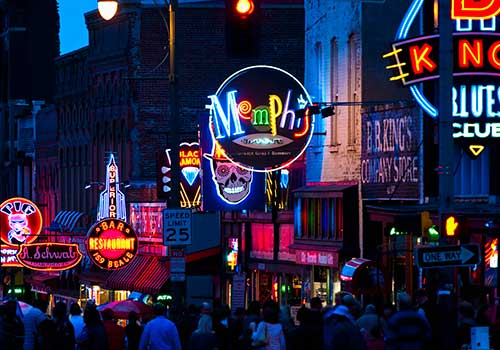African American History Month, also known as Black History Month, is a dedicated time to celebrate the achievements of African Americans and how they helped shape United States history. Since 1976, every U.S. president has officially designated the month of February as Black History Month. But you don't need to wait to visit the many important parks, monuments, homes, and other landmarks that are tributes to the lasting legacies of some of the nation's most influential musicians, politicians, writers, and Civil Rights leaders. While testaments to history can be found in just about every state, consider taking a trip to one of these eleven sites to learn about black heritage.
Little Rock Central High School
1500 S Park St., Little Rock, AR 72202
In September of 1957, nine African-American students known as the "Little Rock Nine," enrolled at the formerly all-white Little Rock Central High School in Little Rock, Arkansas. It was the most famous implementation of the May 17, 1954 Supreme Court decision of Brown v. Board of Education — a landmark case in which the justices unanimously ruled that racial segregation of children in public schools was unconstitutional.
On the first day of classes, Arkansas Governor Orval Faubus resisted the ruling and called in the state's National Guard to block the nine students from entering the high school. Later that month, President Dwight D. Eisenhower sent federal troops to escort the Little Rock Nine into the school so that they could attend classes. These brave students were Minnijean Brown, Elizabeth Eckford, Ernest Green, Thelma Mothershed, Melba Patillo, Gloria Ray, Terrence Roberts, Jefferson Thomas, and Carlotta Walls. The historic high school still stands today as an active school, but guided tours are offered daily.
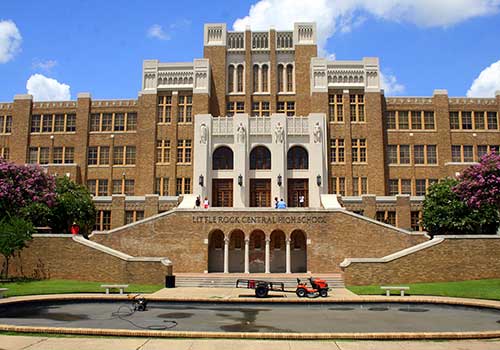
George Washington Carver National Monument
5646 Carver Rd., Diamond, MO 64840
The George Washington Carver National Monument is the first national monument to honor an African American. Located in Diamond, Missouri, this 210-acre park is the site of Carver’s boyhood home and has a ¾ mile nature trail, museum, and an interactive exhibit where visitors are encouraged to be as enthusiastic about nature as young Carver was.
Born in 1864, George Washington Carver was an agricultural scientist and inventor who developed hundreds of products using peanuts, sweet potatoes, and soybeans. Born into slavery, he and members of his family were kidnapped, and though his original masters came to rescue them, only he and his brother were spared by the kidnappers. After slavery was abolished, his former master Moses Carver and his wife Susan raised George and his older brother James as their own children. They were the ones who encouraged Carver to study hard and get his high school and college degrees. Carver created a legacy for himself with his farming techniques, speaking at the national conference of the Peanut Growers Association in 1920, and giving a testimony before Congress in 1921 to support passage of a tariff on imported peanuts.
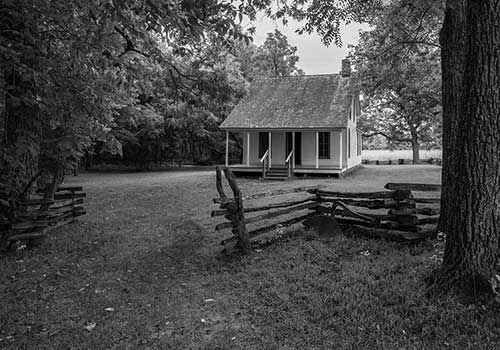
National Museum of African American History and Culture
1400 Constitution Ave NW, Washington, DC 20560
The National Museum of African American History and Culture is the first and only national museum devoted to African American life, history, and culture. The museum encourages all Americans to learn about the richness of African American culture and how it has shaped the nation. As the 19th museum addition to the Smithsonian Institution, it has collected more than 36,000 artifacts, and admission is free. Highlights of the collection include Nat Turner’s bible; a segregation-era Southern Railway car; Michael Jackson’s fedora; Harriet Tubman’s shawl; and Oprah Winfrey’s studio couch.
National Underground Railroad Freedom Center
50 East Freedom Way, Cincinnati, Ohio 45202
It is said that as many 100,000 slaves escaped using the Underground Railroad between 1800 and 1865, and the National Underground Railroad Freedom Center tells the stories of freedom’s heroes and their secret network. The museum’s location on the banks of the Ohio River is significant, as this was a great natural barrier that separated the slave states of the South from the free states of the North, and became a crossing point for many seeking liberation.
Today, tens of millions of people are said to be enslaved around the world, though the number varies based on the methodology used to calculate modern slavery statistics. The museum uses the stories of Civil War era heroes to encourage the contemporary efforts of modern abolitionists. This historic vantage point is meant to educate people on how they can continue to work to end exploitation on a global scale and showcase humanity’s inherent goodness.
Fort Mose Historic State Park
15 Fort Mose Trl, St. Augustine, FL 32084
Founded in 1738, Fort Mose Historic State Park is the site of the first emancipated slaves settlement in the southern United States. The Spanish governor of Florida chartered the settlement Gracia Real de Santa Teresa de Mose, Fort Mose for short, for those fleeing slavery in the British Carolinas. Over the next 25 years, the settlement became a sanctuary for Africans seeking to free themselves from British colonies and slavery.
In 1994, the site was recognized for its historical significance and designated as a National Historic Landmark on the National Register of Historic Places. Though the fort no longer stands, you can learn about the former residents through a museum with interactive exhibits. The grounds are also a host for activities such as kayaking, canoeing, and wildlife watching, and have become a popular wedding venue in recent years.
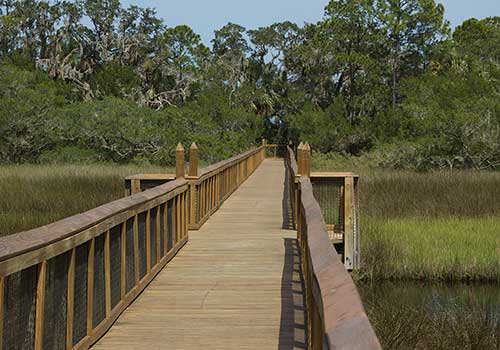
Martin Luther King, Jr. National Historical Park
450 Auburn Ave NE, Atlanta, GA 30312
As one of the most recognized drivers of the civil rights movement, Dr. Martin Luther King, Jr. made a huge impact on the entire nation. But one place that truly made an impact on him was his hometown of Atlanta, Georgia. In early 2018, 35 acres of landmarks and facilities that celebrate the life and legacy of Dr. Martin Luther King Jr., as well as other important civil rights moments, were designated as Georgia’s first national historical park. At the Martin Luther King, Jr. National Historical Park, visitors will find Dr. King’s birth home, the International World Peace Rose Gardens, Ebenezer Baptist Church where he practiced, and The Martin Luther King, Jr. Center for Nonviolent Social Change.
Dr. King is seen as one of the greatest non-violent leaders in world history; he achieved much for racial equality in his 13 years as a leader of the modern American Civil Rights Movement. He drew inspiration from his religious background as a minister, as well as from the teachings of Mahatma Gandhi. Up until he was assassinated, on April 4, 1968, Dr. King practiced non-violent resistance including acts of protest, grassroots organizing, and civil disobedience to achieve equality for African Americans. His “I Have a Dream” speech, Nobel Peace Prize lecture, and “Letter from a Birmingham Jail” are some of the most revered addresses and writings in the English language and are celebrated around the world.
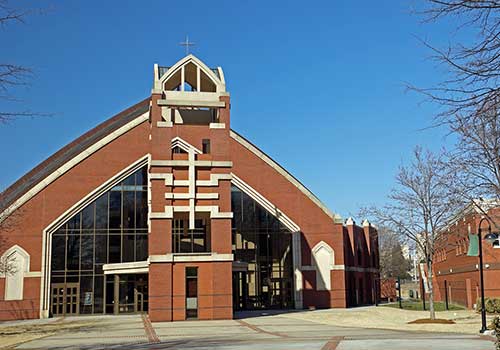
International Civil Rights Center and Museum
134 S Elm St., Greensboro, NC 27401
On February 1, 1960, four students from North Carolina A&T State University sat down at Woolworth’s “whites only” lunch counter in Greensboro and politely asked to be served. They were refused service but remained seated nonetheless. This sit-in sparked a youth-led movement to challenge racial inequality. They sat there until closing; the next day they brought 15 more students with them; day 3 they had 300; and eventually 1,000 people peacefully protested the segregation.
Today, the Woolworth’s building serves as the International Civil Rights Center and Museum, and not only houses the original lunch counter but educational exhibits, photography, artifacts, video reenactments, and interactive galleries. The museum was created to memorialize the courageous stand of the Greensboro Four, and “inspire the vigilance and fortify the spirit of all oppressed people to step forward in the on-going struggle for human freedom.”
Freedom Rides Museum
210 S Court St., Montgomery, AL 36104
The Freedom Rides Museum, an official stop on the Civil Rights Trail, documents the Freedom Riders’ tumultuous journey through the South as they peacefully tried to end transit segregation. In 1961, a group of young black and white student volunteers, known as the Freedom Riders, planned to ride busses from Washington D.C. to New Orleans. It was their plan to sit together in seats and eat together in terminals to urge the federal government to enforce the Supreme Court Ruling of outlawing segregated transportation seating and facilities. The young group, none over the age of 21, expected to be met with violence when they reached a stop in Alabama, and wrote wills and farewell letters.
At 10:23 a.m. on Saturday, May 20, the unarmed Freedom Riders stepped off of a bus in Montgomery, and despite promises to the President, no police showed up protect the Riders. An angry mob flooded in to attack them, beating several to the point of unconsciousness. While the original Freedom Riders continued their journey by private plane instead for their own safety, over the next few months, several hundred more Freedom Riders took up the cause as well. On November 1, 1961, new Interstate Commerce Commission regulations went into effect, and African Americans no longer had to sit separately or use separate waiting rooms and restaurants in transit stations. The museum is located in the historic Greyhound Bus Station, where the original students offloaded, and is also listed in the National Register of Historic Places.
Crenshaw Wall
Since the 1960’s the Crenshaw Wall, located on Los Angeles’ Crenshaw Boulevard near Leimert Park, has been the site of many murals celebrating Black history, music, and politics. The wall existed through segregation, civil rights, and the Black Power movement. By 2000 it had been forgotten and uncared for, and had become a relic of times gone by.
In 2002, a group of twelve South Central graffiti artists, known as “Rocking The Nation,” turned the wall into a 787-feet long, 10-feet high, 7,880 square foot Black History timeline, entitled “Our Mighty Contribution.” The mural spans the length of a full city block, took a year to create, and features images of Fredrick Douglas, Harriet Tubman, Jimi Hendrix, Louis Armstrong, Martin Luther King, and many others. It has become one of the most iconic and popular African-American landmarks in the city of Los Angeles.
African Burial Ground
290 Broadway, New York, NY 10007
In 1991, construction workers for a new federal building in Manhattan discovered the remains of more than 400 Africans in an unmarked cemetery dating back to the 17th and 18th centuries. The African Burial Ground project — a memorial to this sacred site — was created to celebrate the lives of enslaved and free Africans who worked in colonial New York. It is the nation’s earliest and largest known African American cemetery, and one of the most important archaeological finds of our time.
In 1993 the burial ground was placed on the National Register of Historic Places, and in 2006 the memorial site was declared a national monument under the National Park Service. Today, you can pay your respects by admiring the exterior memorial and commissioned art pieces and exhibits in the visitor center.
Beale Street
Beale St., Memphis, TN
In the late 1800s, Robert Church, the first African American millionaire in the South, took an interest in Memphis’ Beale Street and purchased a tract of land on it. He built a park, an auditorium, a recreational center, and an upscale hotel. Church wanted to create a safe haven for black Memphians where African American food, music, and culture could be celebrated. But, modern-day Beale Street really took on its true form in the early 20th century when black entrepreneurs began opening clubs, restaurants, and shops along the corridor in a time of racial injustice.
The corridor quickly became a mecca for blues musicians, especially after W.C. Handy wrote the song Beale Street Blues immortalizing the street. From the 1920s to the 1940s, musicians such as B.B. King, Louis Armstrong, Memphis Minnie, and Muddy Waters flocked to Beale Street and helped create the style known as “Memphis Blues.” Elvis Presley said he was influenced by the music he soaked up while hanging out on Beale Street in the 1950s. Today Beale Street venues offer live music seven days a week, and the area is a hub for jazz and blues festivals.
